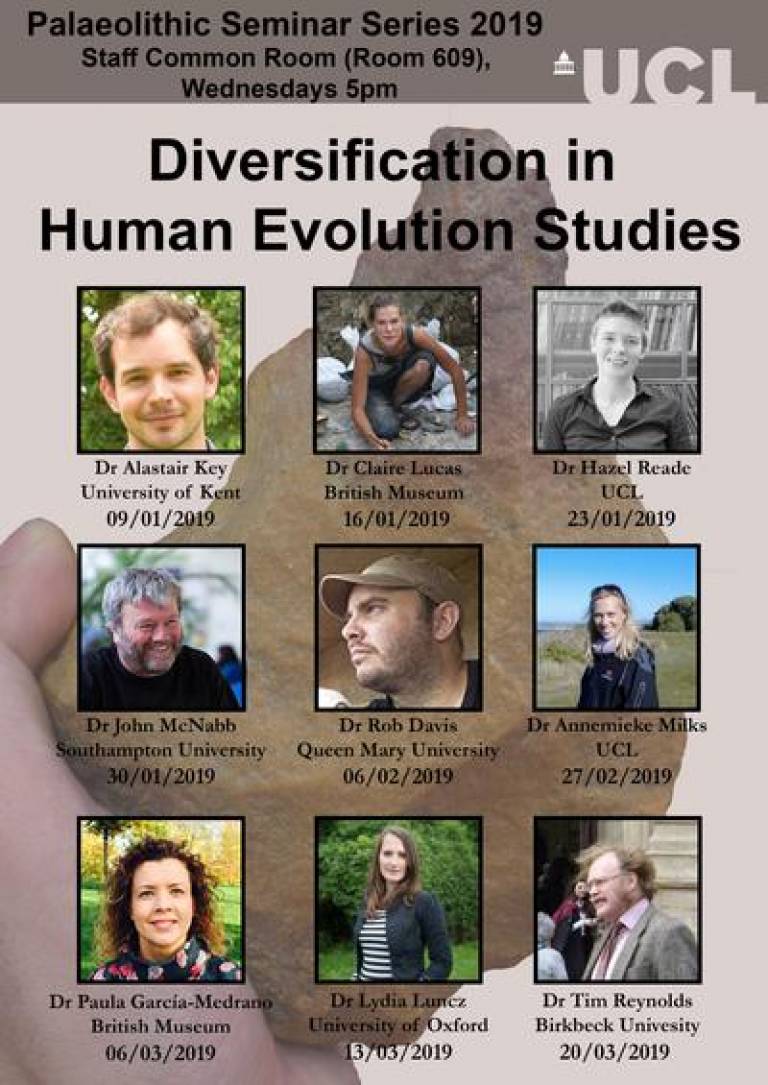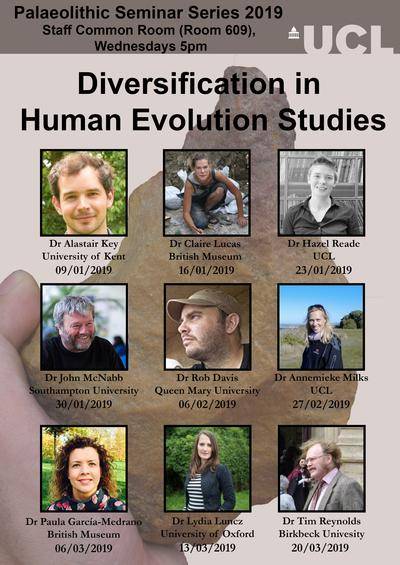The Acheulean of the Western Side of Europe: New approaches to an old issue
06 March 2019, 5:00 pm–6:00 pm

Event Information
Open to
- All
Location
-
Room 609, UCL Institute of Archaeology
Paula Garcia-Medrano (The British Museum) will give the next seminar in the new series on Diversification in Human Evolution Studies at the UCL Institute of Archaeology on 6 March.
Abstract
The Acheulean technology meant revolution and its presence can be clearly tracked out of Africa from Asia to Europe. Within this Seminar we will explore the Middle Pleistocene human presence in the European Atlantic seaboard, through the study of several Acheulean key sites, from the Iberian Peninsula, France and Great Britain, mainly between 700 to 300ka (La Noira, Brandon Fields, Cagny Le Garenne I, Elveden, Swanscombe-UMG, Saint Pierre les Elbeuf, Menez Dregan, Galería and TD10.1 of Gran Dolina -Atapuerca).
Nevertheless, to go beyond the local perspective and gain a regional point of view requires a deep understanding of the underlying technology to identify the differences or similarities in processes and traditions of manufacture. The different criteria used for analysing and categorising the results make it difficult to compare data from different research traditions. And although many technological approaches have been developed, there are still differences in methodology between the different countries. The British research has been based on the typological system of Wymer or the morphometric system of Roe for the analysis and classification of handaxes, as well as on the simple description of shaping sequences developed by Newcomer and Wenban-Smith. In turn, the French traditions are mainly based on the typological view proposed by Bordes, on the complex approach of the chaine operatoire,and on the techno-functional approach proposed by Boëda. Meanwhile, the Spanish tradition has been highly influenced by the French school, with significant methodological developments coming from the Logical Analytic System.
Throughout the definition of a common method of analysis for the study of Large Cutting Tools, the Acheulean can be explored at a regional scale. This method is based on a selection of technological attributes from the main traditions of lithic analysis (typological, technological, morphometrical and sequential) that are considered to be especially significant. The attributes will be those which give more information about the Large Cutting Tools and how they have been produced. Each tool will be analyzed as a unit and also divided in its three main morpho-potential sections: distal, medium and proximal parts.
But in addition, the 21st Century give us the possibility to objectify the most traditional technological analysis using new technologies. So, we will also explore the application of 3D models or the geometrics morphometric methodology to move forward with the technological comparisons, understanding the Western side of Europe as an ecological niche where the Middle Pleistocene hominins lived and moved, leaving tracks of their movements.
This work is funded by a Marie Skłodowska Curie Fellowship (ID. 748316).
Any enquiries about the event may be directed to Tomos Proffitt.
 Close
Close


